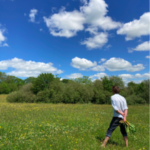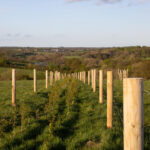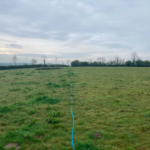Pasture Champions: Bella Lowes, Mill Barton Farm, Mid Devon 3/4
High input grassland has pervaded the south west resulting in the near elimination of species-rich swards. Pioneering “weeds” such as docks have proliferated as a result. At Mill Barton we see their role as essential. With very few deep rooting perennials in the sward early in the process, these “weeds” are important nutrient cyclers, essential nutrient-filled forage in the early season and they provide food for birds, caterpillars and other invertebrates.
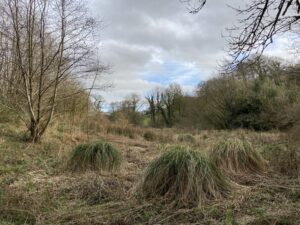 Standing forage
Standing forage
Over the past couple of springs, which have yielded very little grass growth, the cattle are provided with healthy, tannin rich fodder by leaving the docks, and, even when moved into new paddocks, they will not leave them. Fields that are further down the restoration road and have a far higher variety of species in the sward have generally squeezed these weeds out. White clover is another indicator of the compaction at Mill Barton and as a result it is a goal that we see its dominance decrease, however, for the time being it is another essential food plant both for the livestock and the bees and butterflies.
We leave as much standing forage over winter and through the summer as possible. Not only is this important fodder for the cattle that remain outside, but it also provides incredible habitat for invertebrates and over-wintering birds such as snipe and woodcock, which we see and hear from the early evening into the night eating from the dung of the out-wintered cattle.
- Bella Lowes
- Newly planted species-rich hedges
- Mobile water for mob grazing
The seed heads from the standing hay are invaluable to small birds - we have seen an explosion in the numbers of linnets and goldfinches over the past couple of years, as well as large increases in bull and greenfinches, gold crests and pied wagtails. The long grass has provided acres more habitat for voles, shrews and mice which has lead to increasing numbers of tawny owls and a stable family of barn owls.
There is a symbiosis between the birds and the cattle.
Before the swallows arrive in spring, the mob is followed around the farm by wagtails and robins, as well as various corvids who sift through the dung before the soil warms up enough to allow the worms to get active. When the swallows do arrive they forage everyday, without fail, around the cattle.
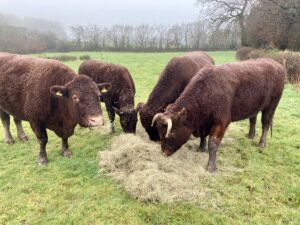 Unrolled species-rich hay bales from one of the restored meadows on the farm
Unrolled species-rich hay bales from one of the restored meadows on the farm
In late autumn, when the herd is still outside, we occasionally unroll species-rich hay bales from one of the restored meadows on the farm for them to eat. This method has definitely helped a few species encroach into the fields with very low species diversity. As our own meadows improve, we will do this more and more frequently in the autumn and in the spring, before the grass growth really gets going. We have learnt that one of the best methods of increasing species diversity is long rest periods after hard-grazing (which allows seed fall or provides areas we can seed ourselves).

